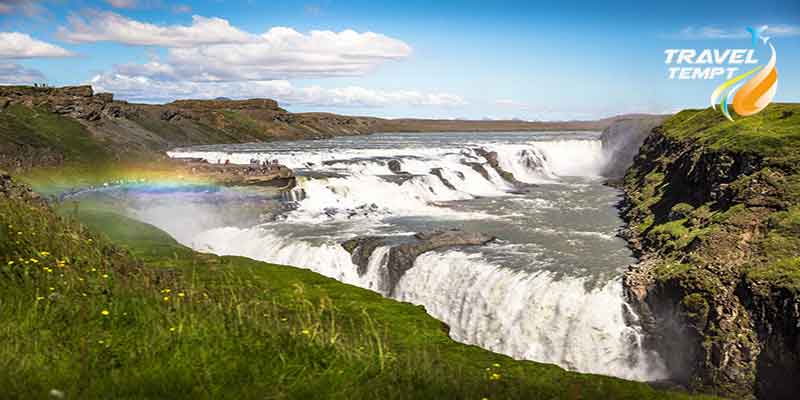Gullfoss waterfall is a prominent and stunning waterfall in Iceland. It is located in the country’s southwest part. The waterfall is commonly referred to as “Golden Falls” because of the golden hue that the glacial water takes on as it flows over the rocks and into a deep canyon.
It’s an area of the Golden Circle, a popular path that passes through the geothermal region of Haukadalur, home to the Geysir and Strokkur geysers and Þingvellir National Park. It is in the canyon of the Hvítá River (White River).
The waterfall is divided into two levels. It descends into a narrow, rocky valley at an average depth of 11 meters on the upper tier and 20 meters on the lower tier. The height and tremendous velocity of the water make this Icelandic waterfall a breathtaking sight.
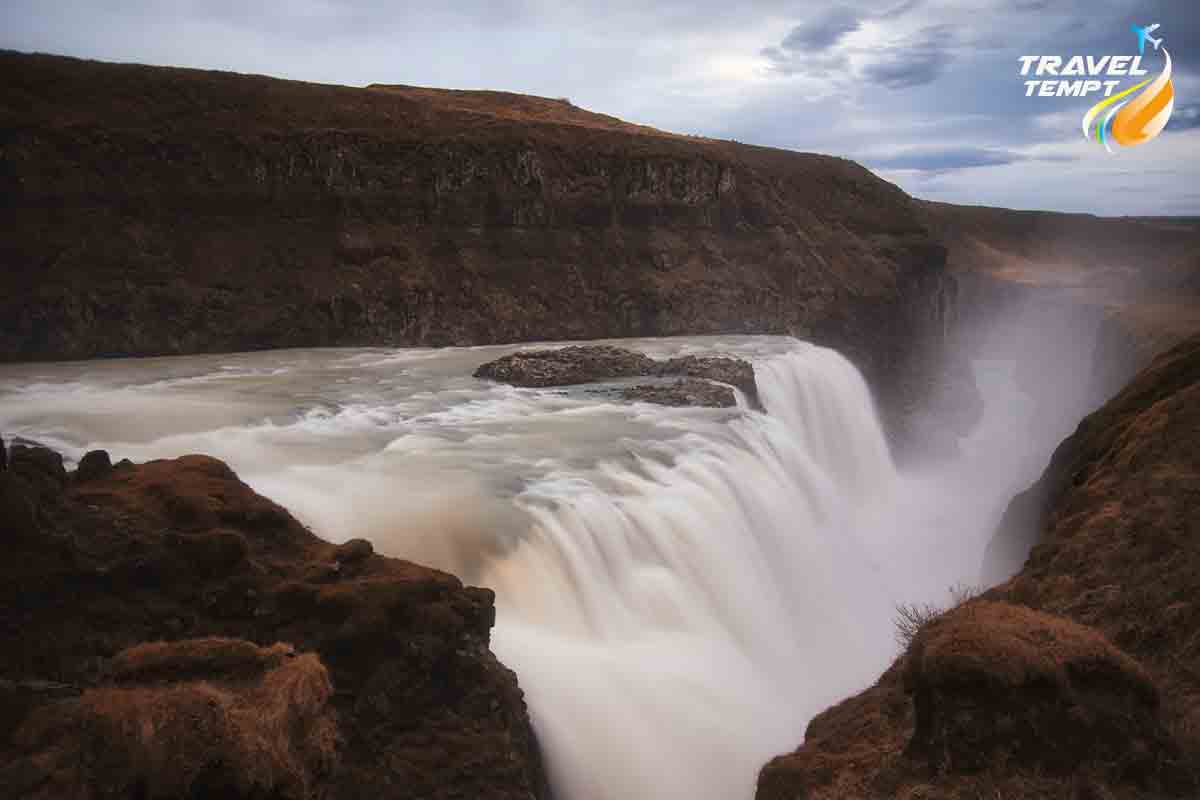
The water that supplies Gullfoss originates from Iceland’s second-biggest glacier, Langjökull. The glacial meltwater flows into the Hvítá River and eventually over Gullfoss.
In the early 20th century, Gullfoss was in danger of being developed for hydroelectric power generation; however, the waterfall was saved by the efforts of local farmer’s daughter Sigríður Tómasdóttir and other conservationists. It is now a natural monument that is protected.
Also Read: Iceland Mountains
How to get to Gullfoss Waterfall in Iceland?
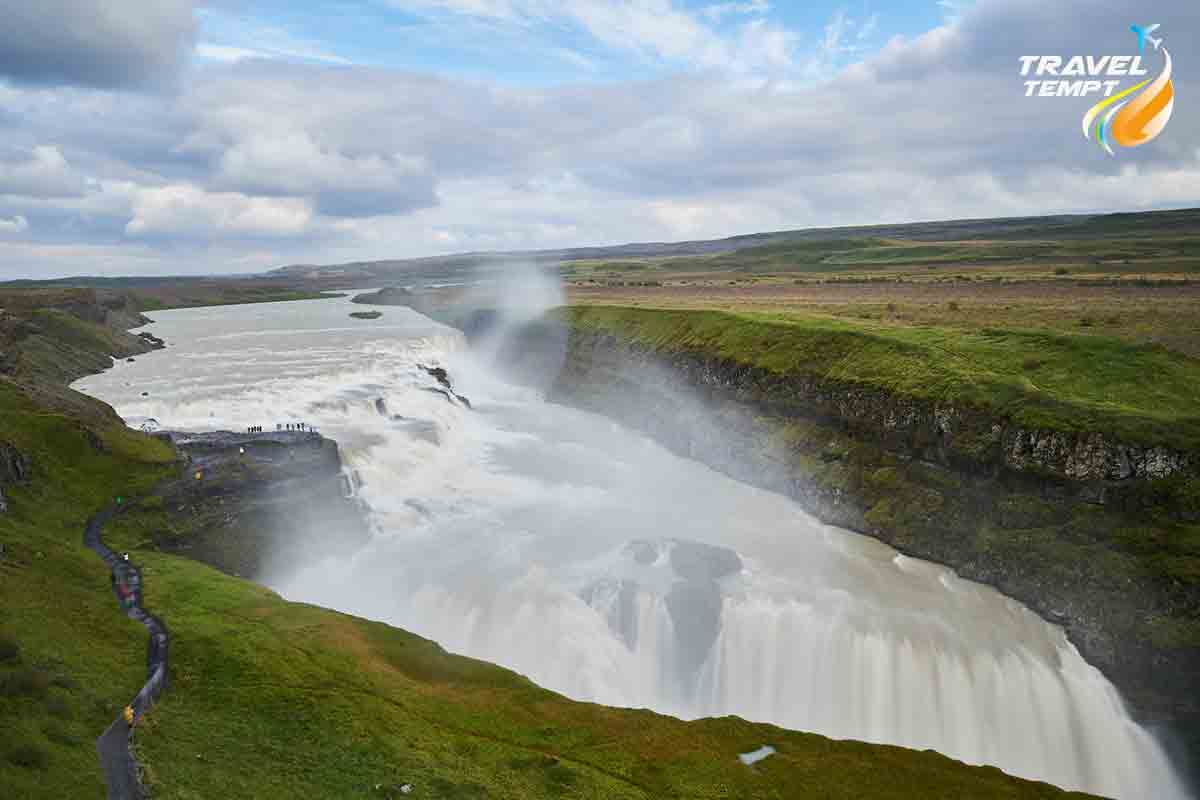
Follow these directions to get to Iceland’s Gullfoss Waterfall:
1. Start from Reykjavik
The distance between Gullfoss and Reykjavik is roughly 120 km east. From the capital, start your journey.
2. Travel via Route 1 (The Golden Circle)
It is part of the renowned Golden Circle trek that passes through Gullfoss. Go east on Route 1, sometimes referred to as the Ring Road.
3. Pass through Thingvellir National Park
Witness the breathtaking scenery as you make your way through an additional Golden Circle feature.
4. Head to Geysir Geothermal Area
Continue on Route 1 until you reach the Geysir Geothermal Area. Stop to witness the spectacular geysers, especially the famous Strokkur.
5. Continue to Gullfoss
After exploring the geothermal area, continue on Route 35, which leads directly to Gullfoss waterfall. It’s well-signposted, so you shouldn’t have trouble finding it.
6. Arrive at Gullfoss
The journey takes approximately 1.5 – 2 hours, depending on road conditions and stops. When you get there, embrace the magnificent Gullfoss Waterfall.
Best Time To Visit
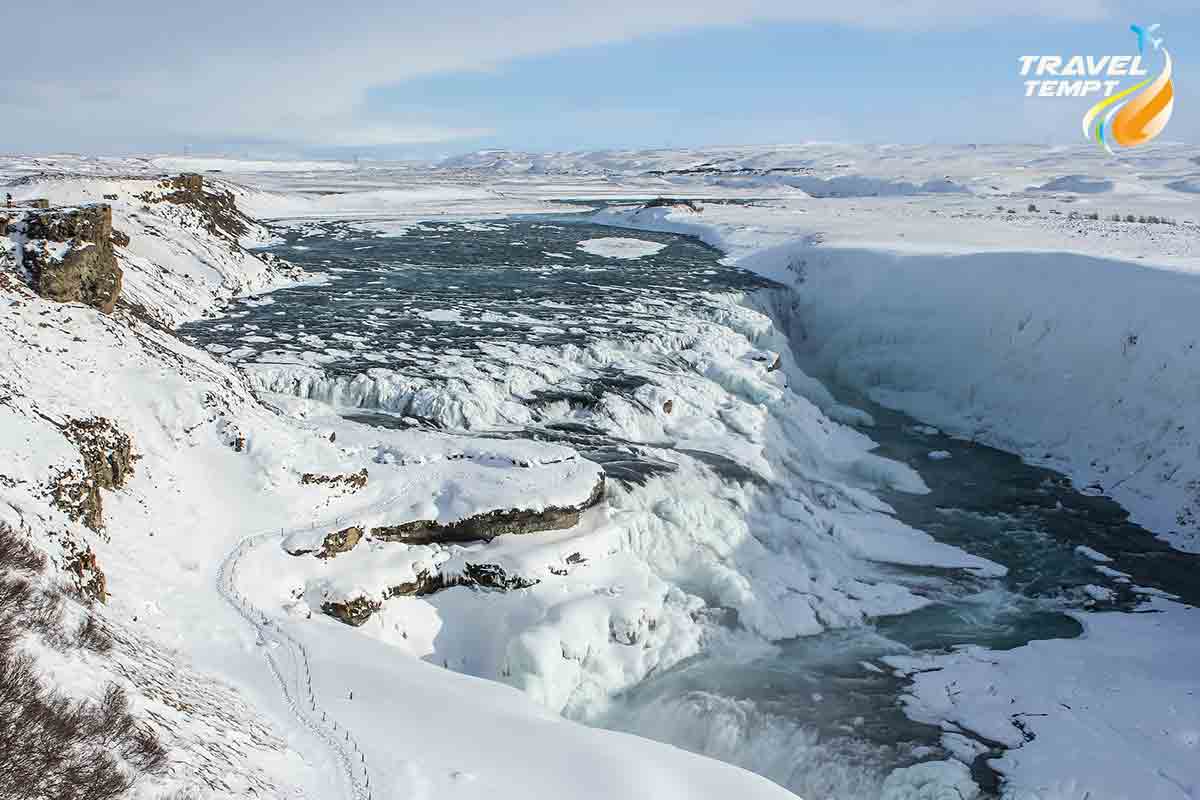
Every season brings a different allure for tourists to Iceland’s waterfall. It’s a breathtaking sight all year round. Gullfoss can be seen from a different angle depending on the season; the ideal time to visit will depend on your tastes in weather, landscape, and crowd density.
In Iceland, Spring (March to May) is a transitional season. The winter’s snow and ice begin to melt as the weather warms, increasing the flow of water at Gullfoss.
Summer (June to August) is the best time to visit Iceland and the busiest travel season. The area surrounding Gullfoss is blanketed in lush foliage and wildflowers, and the temperature is generally pleasant. This is an excellent month of year to explore the area’s hiking trails and take in the gorgeous scenery.
In Gullfoss, the Autumn season (September to November) gives a unique kind of splendor. Vibrant shades of red, orange, and yellow emerge in the changing foliage. As the temperature cools, fewer people visit the waterfall, making it an even more peaceful time to explore.
Winter (December to February) is a magical season. Snow and ice can cover the waterfall and its surroundings, creating an elegant and heavenly landscape. The frozen mist from the falls can form ice patterns, adding to the appeal of the cascade. However, during this season, be prepared for severely cold temperatures and the possibility of icy walkways.
Nearby Attractions
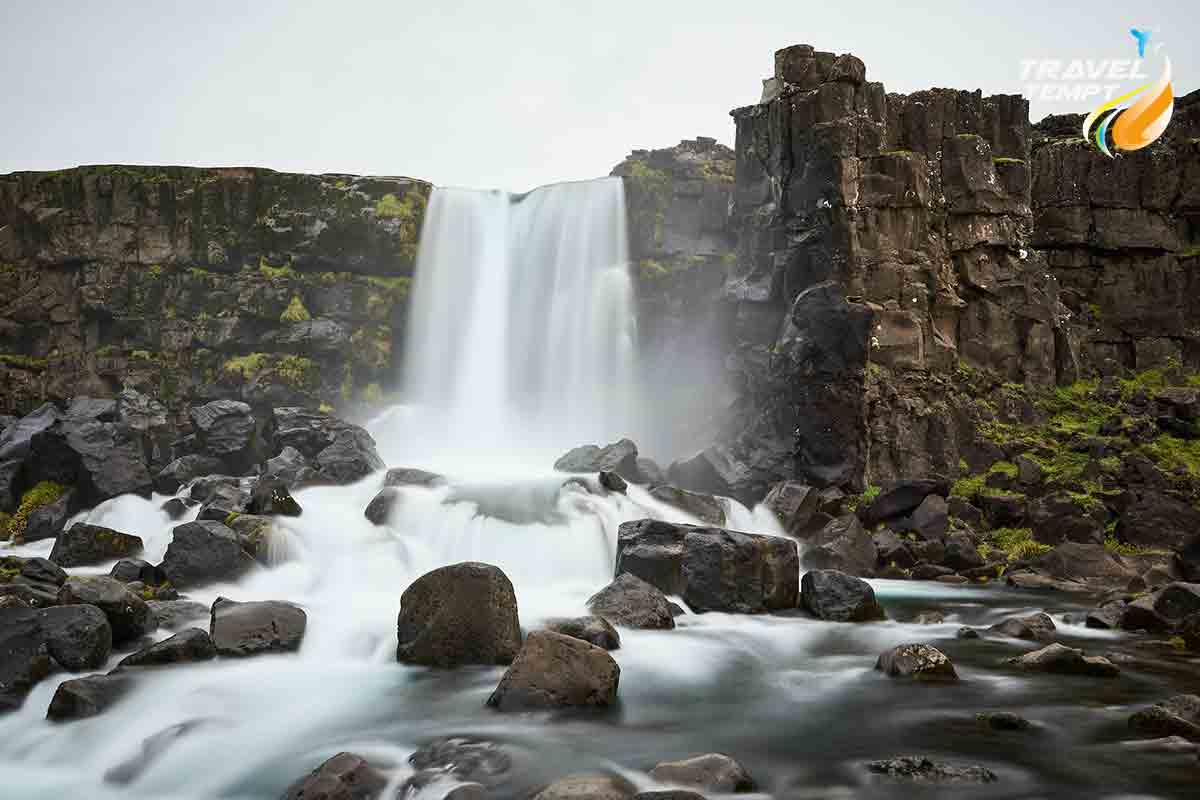
Gullfoss waterfall in Iceland is surrounded by various nearby attractions, making the region a popular destination for visitors. Here are some significant neighboring attractions:
- Geysir Geothermal Area
- Thingvellir National Park
- Haukadalur Valley
- Kerið Crater
- Skálholt Cathedral
- Friðheimar Greenhouse
- Laugarvatn Fontana
- Secret Lagoon (Gamla Laugin)
- Faxi Waterfall
- Hella
Also Read: Iceland in January
Nearby Hotels
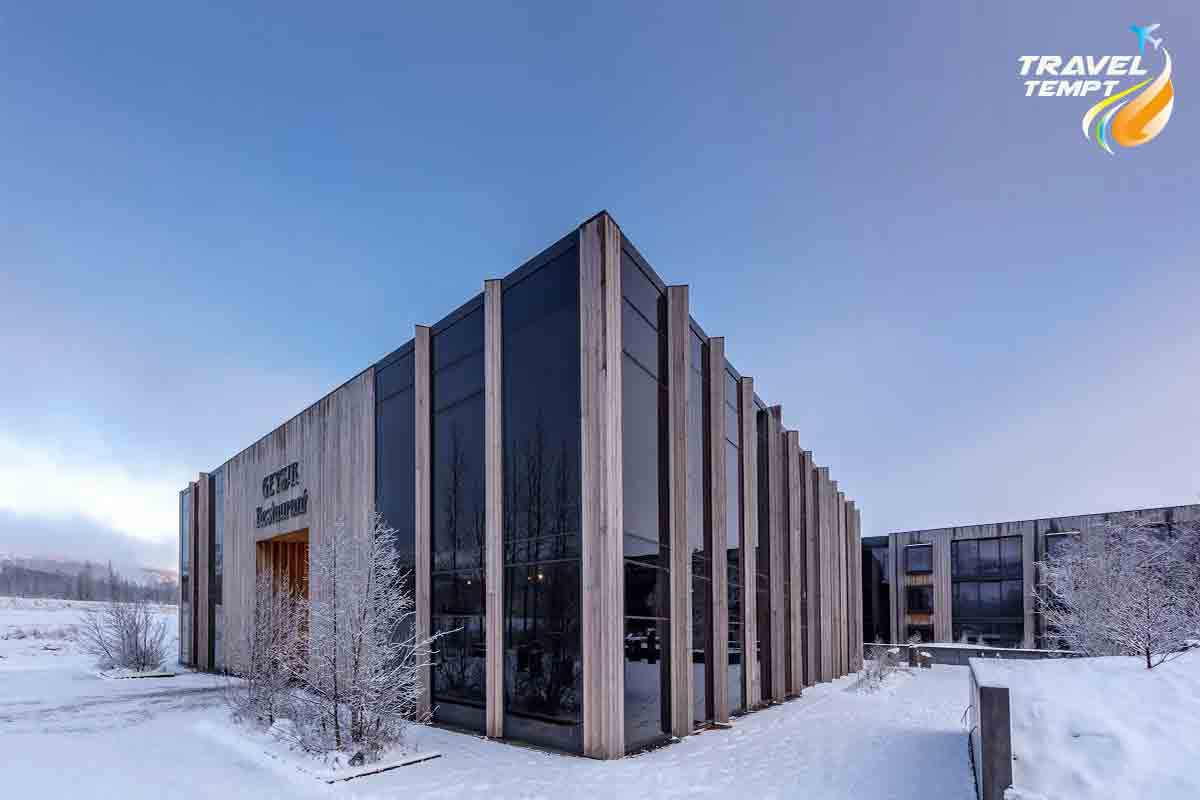
There are many unique hotels in Iceland and lodging options in the area if you want to visit Gullfoss and the neighboring sights along the Golden Circle in Iceland. The following are some choices for hotels in the area:
- Hotel Gullfoss
- Hekla Hotel
- Frost and Fire Hotel
- Náttúra Yurtel
- Geysir Hestar
- Hotel Geysir
- Mengi Countryside
- Litli Geysir Hotel
- Hotel Grimsborgir
- ION Adventure Hotel
- Hótel Flúðir
- Hótel Lækur
- Frost Hotel
- Hótel Örk
- Guesthouses and Airbnb
Also Read: Iceland in November
Nearby Activities
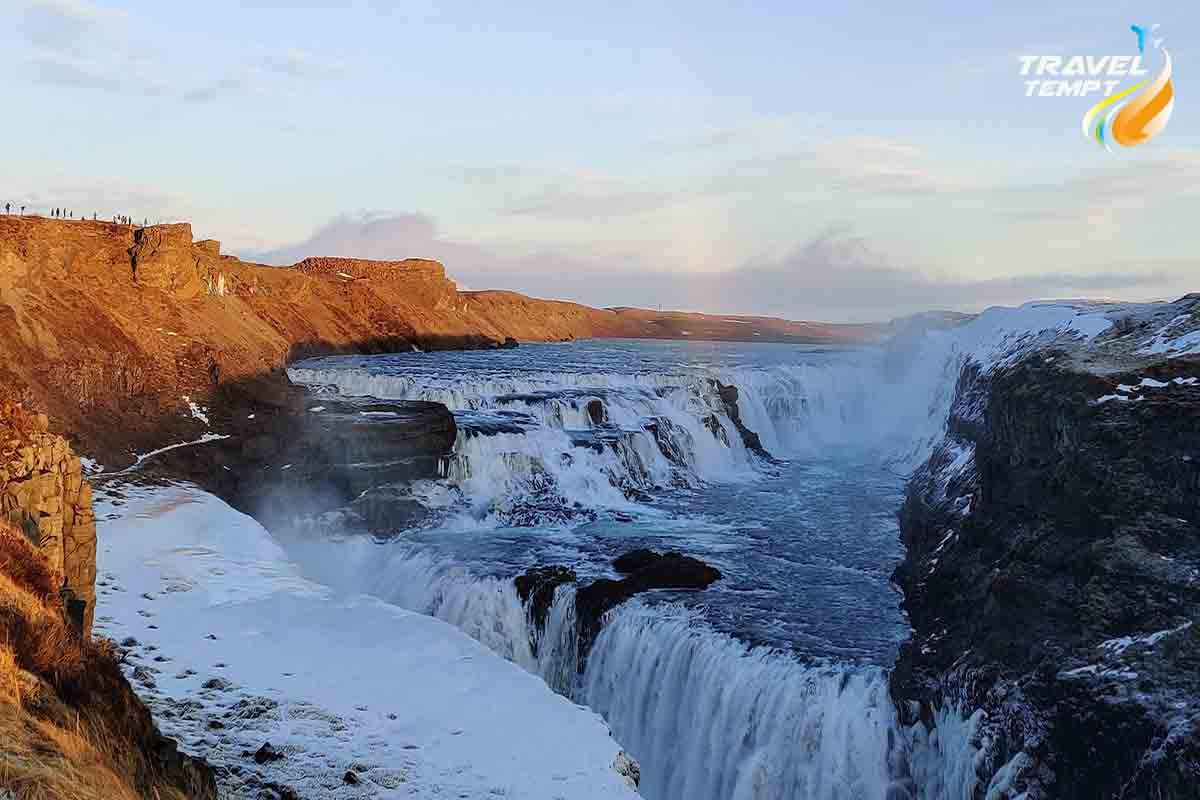
There are numerous fascinating activities to discover and engage in when you visit Gullfoss and the Icelandic Golden Circle region. Consider the following nearby activities:
- Gullfoss Waterfall Observation
- Whitewater Rafting
- Horseback Riding
- Glacier Hiking
- Explore Nearby Villages
- Bird Watching
- Photography
- Visit Gullfoss Cafe and Gift Shops
- Aurora Borealis Tours
- Hot Air Ballooning
Also Read: Diamond Beach
Conclusion
In addition to being a magnificent natural feature, Gullfoss represents a significant emblem of Iceland’s commitment to environmental preservation. It is a must-visit location for tourists taking in Iceland’s natural beauties because of its magnificent beauty and historical significance.
